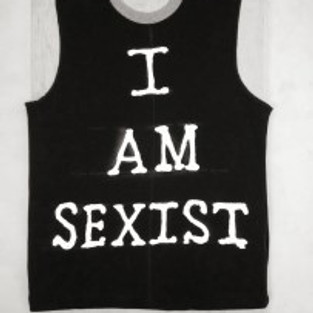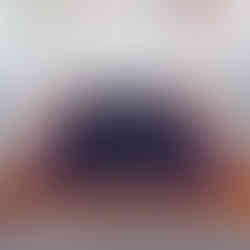ONE YEAR of Living Dangerously: Political Art Comes of Age in LA
- artandcakela
- Nov 17, 2017
- 6 min read
Updated: Nov 21, 2024

Scott Grieger. United States Of Anxiety, 2017, Acrylic on Wall, variable dimensions
ONE YEAR of Living Dangerously: Political Art Comes of Age in LA
Opening at the Brand Library November 18th 6-9pm
‘In our age there is no such thing as ‘keeping out of politics’. George Orwell, 1946
by Larry Gipe
On the surface, the historically fabricated aura of Los Angeles’ art production has been drenched in sunshine: the pools of David Hockney, Richard Diebenkorn’s dappled Ocean Park geometries and the breezy Pop of Ed Ruscha come to mind as icons of the Southern California scene. There’s an old joke about LA, and the movie business that powered its growth: “Strip away the phony tinsel of Hollywood and you find the real tinsel underneath”. It’s hard to imagine rigorous political art taking hold, in a metropolis that has long fetishized the veneer of culture, rather than its depths.
Actually, if one strips away the “tinsel” of the art world, a shimmering layer of work addressing critical issues quickly surfaces. Accelerating exponentially throughout the 1970’s and 1980’s, the non-white and LGBT “subcultures” of Los Angeles have been staking their aesthetic claim for decades through the creation of cultural institutions, murals, and community interactions – creating a lasting foundation for political art in Los Angeles that has long functioned outside of the museum and gallery system. Now, in 2017, it’s more common than ever to find artists tackling social inequities in their practices – a handy word in current usage that encompasses activism, object making, installation, video, and performance. This past year (the “ONE YEAR” of this exhibition’s title) has set off an unprecedented siren of warning: without enormous diligence, the ground gained by oppressed cultures in our society will be ceded.
ONE YEAR: The Art of Politics in Los Angeles, is an exhibition that seeks continuity between the first wave of engaged artists that emerged in the 1970’s and 1980’s (represented here by Alexis Smith, Scott Grieger, Linda Vallejo and Eileen Cowin, among others), and the emerging generation (Star Montana, Kohshin Finley, Thinh Nguyen) that grew up during the Obama years, creating a gathering of kindred spirits that traverses all lines of age, gender and race. Although the current administration has brought generalized fear, anxiety and urgency to new heights, the issues that all the included artists address are historical, and have plagued Los Angeles since its inception.
When Los Angeles was in the throes of its ascendance in the early 20th century, there was no lack of institutionalized social injustice. Decades of corrupt City Halls tolerated racist housing covenants, violent union busting, and abundant KKK headquarters scattered throughout the Southland. From the Great Depression onward, LA was a barely-containable melting pot of ethnic minorities, groups that were exploited as service and agricultural workers, but largely ignored when it came to civic improvements and fair wages. The nearly indiscriminate repression that occurred during the Zoot Suit riots in 1943 – stoked by a white separatist press that encouraged “racial cleansing” – inspired a generation of activism (both Cesar Chavez and Malcolm X were zoot-suiters). Furthermore, although it might be argued that the current LAPD is more diversified and enlightened, it’s been traditionally renowned for its roughshod methods: Chief William Parker (head from 1950-1966) had a strategy of brutality against minority communities that ignited the Watts Riots in 1965, and policies of anti-gay harassment were promulgated under Chief Edward M. Davis (1969-1978). Any inhabitant of LA during the late-1980’s would’ve been aware of Chief Daryl Gates’ ‘Operation Hammer’ – a relentless series of “sweeps” that fostered a toxic policing environment leading to the infamous Rodney King beatings of 1992 (and Gates’ early retirement).

Star Montana
In the years dividing the Watts and King riots, the arts in Los Angeles began to politicize with the development of important collectives, galleries and non-profits sited in un-gentrified areas. In 1967, the Brockman Gallery was founded in Leimert Park, a largely African-American enclave Los Angeles neighborhood warmly called “the village” by its residents. During this era, branches of the Black Arts Movement (BAM) were influencing and stimulating new production and community engagement. Although the Brockman Gallery was a commercial venture, it provided an important launch pad for political art, including the work of Betye Saar, David Hammons, and John Outterbridge. Today, contemporary artist Mark Bradford – along with philanthropist and collector Eileen Harris Norton – has circled back to this era and place, developing “Art+Practice” in 2015 as a center for youth arts development, lectures and museum-style exhibitions (opening with a solo show by Outterbridge).

Rodney King March 3, 1991. Photo Credit: George Holliday
The Chicano art movement (as called “El Movimiento”) encouraged the establishment of Self-Help Graphics (1972-) in the Boyle Heights neighborhood of East LA, the most prominent of the many cultural happenings and institutions that aimed to highlight the uniqueness of “Chicanismo” through youth training, arts education and civic collaboration. In 1974, the Barrio Mobile Art Studio (BMAS) was first introduced by Self-Help, a model program of art activism that provided art supplies and instruction to the community, including street gangs (who published their own newsletter with the assistance of BMAS). That same year, nascent Chicano performance and activist groups like ASCO and Los Four began to represent, becoming a potent public face to the concerns of this under-privileged raza. Not incidentally, artist Linda Vallejo, a ONE YEAR participant, has taught for many years in Self-Help programs.

Barrio Mobile Art Studio 1974. Courtesy Self Help Graphics & Art, courtesy of Self Help Graphics & Art.
In 1973, artist Judy Chicago led the charge to establish The Woman’s Building (1973-91) in Los Angeles, a collective promoting feminist art, “alternative” art education that eschewed the male-dominant “canon”, and the women’s movement in general (the Los Angeles Times once referred to the Woman’s Building as a “feminist mecca”). Later in the decade, non-profit gallery LACE (Los Angeles Contemporary Exhibitions, 1978-present) was founded by a group of artists, buoyed by the ebullient leadership of Joy Silverman through LA’s first art boom cycle in the 80’s. The chronology of both institutions, reads as a de facto history of political art in Los Angeles – a mantle LACE continues to carry to this day. Their mission statement is worth repeating outright: LACE is dedicated to the art of our time that focuses on freedom of expression; experimentation with ideas, materials, and new forms; and content that is challenging and socially engaging.
Against the background of civil unrest and urban disenfranchisement wrought by overdevelopment and neglect, the 1980’s emerged as the decade where formal issues of artistic production began to take a backseat to political issues of difference and equality. Even major museums started to pull their heads out of the sand, with MOCA’s “A Forest of Signs: Art in the Crisis of Representation” (1989) that tackled the artist’s role as a commodity in contemporary culture. That “crisis” seems like what we refer to now as “white people’s problems” – it would take until the following decade and the explosion of multiculturalism for artists of color to be invited to the table. The 1980’s also witnessed the beginning of the AIDS calamity, a tragedy that struck at the core of cultural Los Angeles. LA was, relatively speaking, a gay and lesbian stronghold throughout the 20th Century – with forces that found expression in the alternative Hollywood of Kenneth Anger, and spawned the Advocate in 1967 (its first issue, a pre-Stonewall example of gay activism, was secretly mimeographed in the basement of ABC Studios.) In the art world – which had greatly expanded in the 1980’s – the AIDS crisis jump-started a wave of LGBT activism and art that reverberates even stronger today.

West Coast Black Artists March 17, 1975. Courtesy of the Brockman Gallery Archive
By 1992, outliers like Fred Wilson began to “mine the museums” of regional areas like the Walters Art Gallery in Baltimore, unearthing and re-contextualizing the unholy secrets in their archival depths; this initial progress towards a multicultural art world began with thorough interrogations, sometimes of the past, sometimes into the institutions of the present (and ideally a bit of both). A new, conceptual brand of engaged political art emerged from this period from LA-based Daniel J. Martinez, Andrea Bowers, Sam Durant, Charles Gaines, among many others.
LA’s new generation of artists is coming of age in an era of divisiveness and upheaval not seen since the 1960’s – not incidentally, the era that witnessed the first upsurge of political art. ONE YEAR presents a group that has channeled their anger, desires and hopes about the world into art – just one small, but very public way to express their determination, to issue their warnings. Los Angeles is on the cusp of a new political art tsunami, the crest of which has yet to be realized. It’s building: on the streets, on the internet, in this gallery.
Artists Kim Abeles, Guillermo Bert, Eileen Cowin, Kohshin Finley, Joey Forsyte, Keiko Fukazawa, Lawrence Gipe, Mark Steven Greenfield, Scott Grieger, Emily Elisa Halpern, Alex Kritselis, Nery Gabriel Lemus, Constance Mallinson, Star Montana, Amitis Motevalli, Thinh Nguyen, Umar Rashid (Frohawk Two Feathers), Ben Sakaguchi, Alexis Smith, Linda Vallejo, HK Zamani
#losangeles #california #losangelesartist #art #painting #Alexissmith #westhollywood #OneYear #AlexKritselis #losangelesart #contemporaryart #EileenCowin #NeryGabrielLemus #southerncalifornia #ConstanceMallinson #ThinhNguyen #abstract #collage #feminist #photography #brandlibrary #artgallery #lawrencegipe #BrandLibraryandArtCenter #gallery #JoeyForsyte #museum #UmarRashidFrohawkTwoFeathers #artandcake #artopening #kimabeles #StarMontana #assemblage #ScottGrieger #artexhibition #installation #BenSakaguchi #ArtandCakeLA #fineart #artists #artist #MarkStevenGreenfield #EmilyElisaHalpern #soloshow #GuillermoBert #mixedmedia #arts #LindaVallejo #environment #artreview #sculpture #artmagazine #ONEYEARTheArtofPoliticsinLosAngeles #faultline #KeikoFukazawa #ArtandCulture #exhibition #graphite #exhibit #HKZamani #AmitisMotevalli #dtla #drawing #KohshinFinley


































